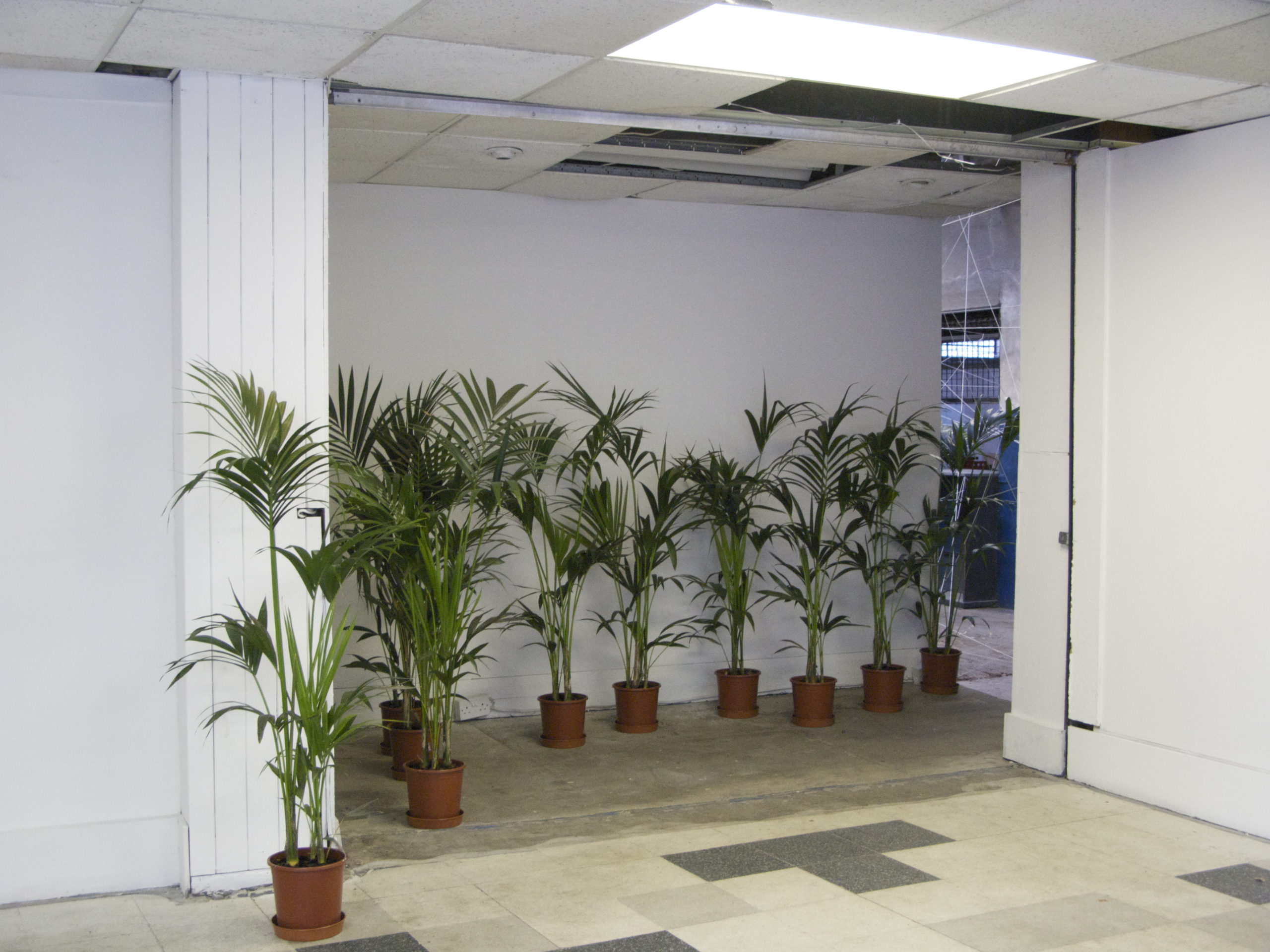A History of Two Mountains II is an exhibition of copies of selected artworks by Andreas Slominski, Marcel Broodthaers, Urs Fischer and Marcel Duchamp. Due to the simple or gestural nature of the work, copies of these works can be made that are ostensibly equal to the originals. This exhibition comes exactly a year after the first instalment, which took place at Auto Italia’s previous space on Queen’s Road, Peckham. The title, used for both editions of the exhibition, is taken from lyrics to a song written by the American artist Lawrence Weiner. In the first iteration of this show, this appropriation was one of thirteen fake artworks, exhibited alongside copies of work by Richard Prince (a re-photographed Marlborough advert), Dominique Gonzalez-Foerster (a lily balancing on a radio alarm clock), Martin Creed (a lamp going on and off), and Felix Gonzalez-Torres (wrapped sweets piled in the corner). A direct response to Auto Italia’s current gallery space on the Old Kent Road, A History of Two Mountains II consists of only four works of art, which occupy the façade, the entrance, four walls and the space in between.
The Façade: Andreas Slominski, Christmas Decoration for Spring, Summer and Autumn, 2003. Aluminium frame, tube lighting. Exhibited as part of the collection of the Museum für Moderne Kunst in Frankfurt am Main, this work occupied the façade of the iconic Hans Hollein building from the first day of spring (which in 2003 fell on 21 March) until its removal at the at the start of winter. Re-made here for a more temporary exhibition, the work is shown at the height of summer, the most ‘unseasonal’ time for Christmas decorations. Although ‘Seasons Greetings’ invariably refers to Christmas, this work plays on the ambiguity of the phrase, accompanied by flashing, brightly-coloured snowflakes, stars and fir sprigs. During bright sunlight of mid-July, the lights are not visible and instead the viewer sees a mess of wires and frames, the illustrations only appearing after dark.
The Entrance: Marcel Broodthaers, L’Entrée de l’Exposition, 1974. Kentia palm trees. A line of potted palm trees leads the viewer around the corner from the reception area, into the main exhibition space. Palm trees featured frequently in Broodthaers’ work, notably in Tapis du Sable, 1974, and Un Jardin d’Hiver, 1974. This particular piece was made for the first of his series of Décor exhibitions, Catalogue – Catalogus at the Palais des Beaux-Arts in Brussels from 27 September – 3 November 1974. Taking place in the few years directly preceding his death in 1976, the Décors were retrospective exhibitions in which Broodthaers combined previous work in large, new installations. Another version of L’Entrée de l’Exposition was included in the second Décor exhibition, Eloge du Sujet, at the Kunstmuseum in Basel, also in 1974.
The Space In Between: Marcel Duchamp, Sixteen Miles of String, 1942. One-mile length of string. Soon after his arrival in New York, Duchamp was invited, along with André Breton and Max Ernst, to select and hang a large survey exhibition of Surrealist art, which combined the old European establishment, now dispersed by the outbreak of World War II, with some American contemporaries. The exhibition was initiated by the Coordinating Council of French Relief Societies in aid of war prisoners, and the title, First Papers of Surrealism, was a reference to the application forms for US citizenship that so many European émigré artists acquired at this time. Duchamp’s personal contribution to the show was a mile length of string, zig-zagged in a tangled mesh throughout the main gallery, obscuring both the paintings and the entrance to the room. It was interpreted variously as a reference to the difficulty of Modernist art, as a cobweb commenting on the out-of-date work on display, and as a play on the Surrealist fascination with the labyrinth. Even if the work was intended to be critical its presentation was playful, Duchamp asked the children of art collector Sydney Janis to play energetic games in the gallery during the opening, at which the artist himself was not present.
Four Walls: Urs Fischer, Verbal Asceticism, 2007. Wallpaper (inkjet print on paper) on wall. The dark rectangles that line the walls of the largest gallery space are a copy of Verbal Asceticism by the Swiss artist Urs Fischer, itself a copy of another work. As part of the exhibition Sequence 1: Painting and Sculpture form the Francois Pinault Collection at The Palazzo Grassi in Venice in 2007, Fischer presented full-scale black and white enlargements of reproductions of paintings by Mark Rothko and Cy Twombly, pasted directly onto the gallery walls, acting as a backdrop to Fischer’s own work and work by Franz West. In this remake, the nine black-and-white prints are copies of Rothko’s Seagram Murals, held in the Tate Collection and currently on display at Tate Modern. In 1958, Rothko accepted a commission to produce a series of paintings for a self-contained room at the new Four Seasons restaurant in the Seagram building on Park Avenue, New York. Inspired by Renaissance frescoes on a trip to Italy, Rothko conceived each large canvas as a drama in which the viewer was participant, and like a series of façades when exhibited together as a complete installation they form a ‘place’. Upon finishing the work, Rothko cancelled the commission, preferring that the paintings be shown in a dedicated space and not a restaurant. Fischer’s appropriation of Rothko’s work as wallpaper could be a comment on the populist appeal of this once-pioneering Modernist, or an experiment, taking literally Rothko’s description of his oversized easel paintings as murals by pasting them directly to the wall.



